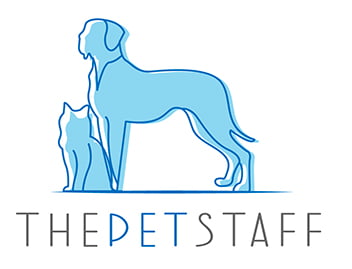Chow Chow, the lion-like companions with hearts of gold! Known for their distinctive blue-black tongues and fluffy, bear-like appearance, Chow Chows are one of the world's most unique and captivating dog breeds. There’s much more to these ancient dogs than their distinctive look! In this in-depth guide, we will explore Chow Chows' rich history as companions to Chinese emperors and their unique blend of independence and loyalty.
Breed Characteristics
Temperament | Dignified, independent, aloof |
Intelligence | moderate |
Affection/Friendliness | Loyal to family, reserved with strangers |
Trainability | low |
Mental Stimulation | Moderate – obedience, structured play, training |
Exercise Needs | Moderate – daily walks, light play |
Apartment Living | Suitable with exercise |
Family Friendly | Moderate, best with older children |
Pet Friendly | Low to moderate, early socialization needed |
Drooling Level | low |
Energy Level | Moderate |
Loneliness Tolerance | low |
Adaptability | Moderate |
Tendency to bark | low |
Origin
The Chow Chow is among the oldest and most recognizable dog breeds, with origins in China dating back more than 2,000 years. Believed to have originated in the northern regions, particularly Mongolia and Siberia, these dogs were initially bred for multiple purposes, including hunting, herding, guarding, and even pulling sleds. Their name, 'Chow Chow,' derives from a term used by 18th-century British merchants, who referred to various miscellaneous items from the East as 'chow chow.' Over time, the name stuck to this unique breed.
Chow Chows were highly valued in Chinese culture, often seen as symbols of nobility and wealth. Emperors and aristocrats kept them, and their likenesses were even featured in ancient pottery and artwork. Interestingly, their blue-black tongues and lion-like appearance have sparked myths, including the belief that they are descended from bears or even mythical creatures. While their exact lineage remains a mystery, genetic studies confirm their status as one of the oldest and most primitive dog breeds. Today, the Chow Chow continues to captivate dog lovers worldwide with its regal demeanor and rich history.
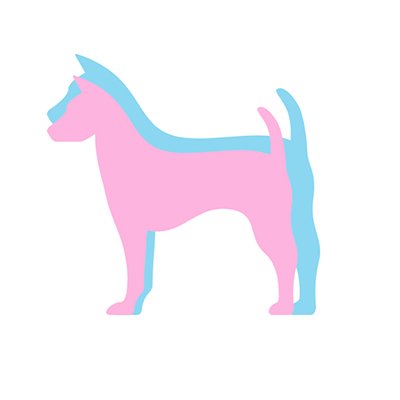
Breed Overview
Height: 18–21"
Weight: 55–70 lbs
Height: 17–20"
Weight: 45–60 lbs
Breed Group
Non-Sporting
Life Span
8-12 years
Coat
Double coat
Coat Length
Long or rough
Hypoallergenic
No
Shedding Level
High
Size
Chow Chows are a medium to large-sized breed known for their sturdy, square-shaped build and lion-like appearance. Adult male Chow Chows typically reach a height of 18 to 21 inches at the shoulder and weigh between 55 and 70 pounds, while females usually are around 17 to 20 inches and weigh 45 to 60 pounds. Though compact, they possess a strong, muscular build that gives them a sturdy and commanding presence. Their dense double coat, available in smooth and rough textures, enhances their overall bulk, making them appear more significant than their actual size. Combined with their regal demeanor, this distinctive look makes them a striking breed.
Personality
Chow Chows are a breed like no other, known for their unique and often misunderstood personality. They are often compared to cats due to their independent, dignified, and somewhat reserved nature. While deeply devoted to their families, they typically form strong attachments to one or two individuals rather than being overly social. This makes them ideal companions for those who appreciate a more thoughtful and reserved canine personality.
Unlike other dogs, Chow Chows are not typically exuberant or overly playful; instead, they carry themselves with a quiet confidence and regal air. They are calm and composed, often content to observe their surroundings rather than actively seek attention. However, they are naturally protective and serve as excellent watchdogs, remaining cautious around strangers and alerting their family to potential threats.
While Chow Chows are intelligent dogs, they can be stubborn and strong-willed, making training more challenging. Like most dogs, Chow Chow responds best to consistent, positive reinforcement and a patient, respectful approach. Early socialization is essential for helping them grow into well-adjusted adults, as they tend to be territorial and cautious around unfamiliar people or animals. Set up doggy playdates, enroll in training classes, or visit the dog park to socialize Chow Chow at an early age so it can benefit both the dog and its owner long term.
Although Chow Chows are independent, they are intensely loyal to their families and show affection uniquely. They flourish in a stable, structured environment where they feel safe and appreciated. They make a good family dog and tend to do better with families with older children. If you want a loyal, dignified, and independent companion, the Chow Chow's distinct personality could be an ideal match for you!
Temperament
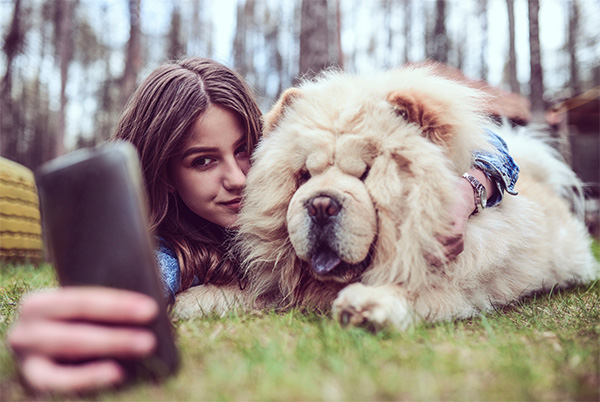
The Chow Chow's temperament is deeply rooted in its genetic makeup, reflecting centuries of selective breeding for specific traits. One of their most distinctive genetically influenced traits is their low to moderate energy level. Chow Chows are not high-energy dogs; they are calm, composed, and often content with a sedentary lifestyle. This makes them an excellent fit for apartments or homes without spacious yards as long as they get regular, moderate exercise to stay healthy.
Another key aspect of their temperament is their independent and aloof nature. Chow Chows are not naturally sociable or outgoing like some other breeds. They are naturally reserved, particularly around strangers, and may appear aloof. This wariness stems from their history as guard dogs and protectors, a role that required them to be vigilant and discerning. Early socialization is crucial to help them adapt to new people and situations, but they will always retain a certain level of caution.
Chow Chows possess a strong territorial nature, an inherent trait that makes them naturally protective of their home and family. This instinctive guarding ability makes them excellent watchdogs and loyal family pets. However, this can sometimes lead to aggression if not properly managed, especially toward unfamiliar animals or people encroaching on their space.
Lastly, their stubbornness and strong will are hallmark traits of the breed. Chow Chows are intelligent but not eager to please, making training challenging. They require a confident, patient handler who establishes clear boundaries and uses positive reinforcement techniques.
Diet/ Nutritional needs
Chow Chows have specific dietary needs to support their unique physiology and maintain their luxurious coat. A nutritious, protein-rich diet with meat as the main ingredient is crucial for maintaining muscle health. Since they are prone to obesity, portion control and a balanced mix of proteins, fats, and carbohydrates are crucial. Incorporate omega-3 and omega-6 fatty acids to promote skin and coat health, and ensure their food includes glucosamine and chondroitin to support joint health, as Chows are prone to hip dysplasia. To prevent weight gain, avoid overfeeding and limit treats. Be sure to consult your vet to adjust your diet according to your age, size, and activity level.
Activity/ Exercise
Chow Chows are a low to moderate-energy breed, so their exercise needs are relatively modest compared to more active breeds. A daily routine of 30 to 60 minutes of moderate exercise is typically enough to keep them healthy and content. This can include leisurely walks, light play sessions, or short hikes. Due to their thick double coat, they are sensitive to heat, so avoid vigorous exercise in warm weather and opt for early morning or evening outings.
Chow Chows thrive on mental and physical stimulation, so incorporating puzzle toys or training exercises helps engage their intelligent minds. While they are not overly athletic, they do benefit from regular movement to maintain joint health and prevent obesity, a common concern in the breed. Always monitor their energy levels and adjust activities to suit their individual needs, ensuring they remain fit and content without overexertion.
Appearance/ Colors
The Chow Chow is one of the most visually striking dog breeds, known for its lion-like mane and distinctive features. They have a sturdy, square-shaped build with a broad skull, deep-set almond-shaped eyes, and a unique blue-black tongue, a trait shared only with a few other breeds. Their ears are small, triangular, and gently rounded at the tips, standing upright to give them an attentive look.
Chow Chows are famous for their luxurious double coat, which comes in two varieties: rough (long and dense) or smooth (shorter and plush). Both coat types are incredibly thick, providing insulation against harsh weather.
The breed boasts a range of stunning colors, including:
Red: Ranging from deep mahogany to light golden shades.
Black: A solid, glossy black coat.
Blue: A dilute gray with a bluish tint.
Cream: A soft, pale ivory or off-white.
Cinnamon: A warm, reddish-brown hue.
The breed standard prefers solid colors, though some Chow Chows may exhibit lighter shading on their tail, mane, or breeches. Their regal appearance, unique colors, and plush coat make the Chow Chow a truly majestic and unforgettable breed.
Grooming needs
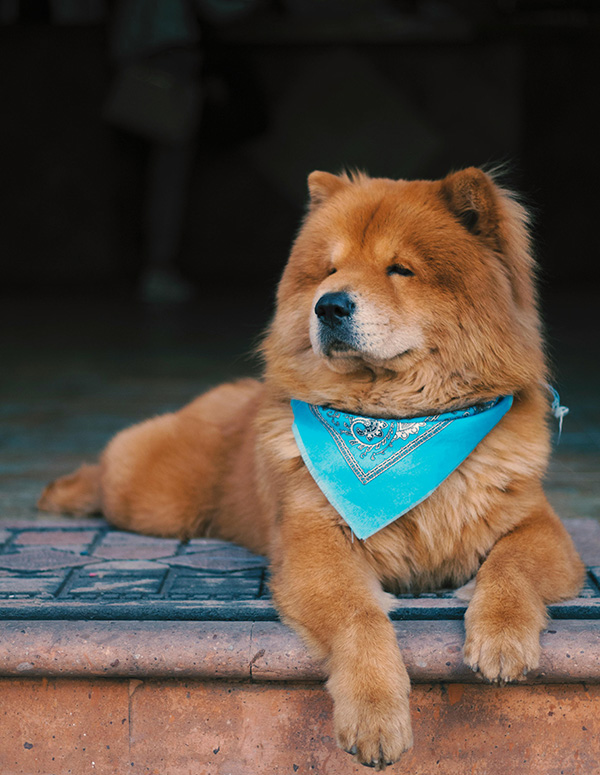
Chow Chows are famous for their thick coat, which requires regular grooming to keep it healthy and tangle-free. Due to their dense fur, they are prone to matting and shedding, so a consistent grooming routine is essential. Chow Chows should be brushed 2-3 times weekly to eliminate loose hair, prevent matting, and evenly distribute natural oils. Daily brushing is recommended during shedding seasons in the spring and fall.
Bathing should occur every 6-8 weeks using a gentle dog shampoo, ensuring thorough drying to avoid skin issues. Focus on areas prone to matting, like behind the ears, under the legs, and around the tail. Occasional trimming can help maintain a tidy appearance.
Nail trimming every 3-4 weeks is crucial to prevent discomfort and joint problems, while weekly ear cleaning helps avoid infections. Additionally, brushing their teeth 2-3 times a week maintains oral health. While Chow Chows require significant grooming, their stunning appearance and regal demeanor make the effort worthwhile, and regular grooming also strengthens the bond between you and your furry companion!
Adaptability
Chow Chows are a breed with moderate adaptability, thriving best in environments that align with their unique temperament and physical needs. Their calm and low-energy nature makes them ideal for apartment living, provided they get regular, moderate exercise. However, they do appreciate having a small outdoor space to explore and patrol, as their territorial instincts make them natural watchdogs.
Chow Chows are prone to heat sensitivity because of their dense double coat. They thrive in cooler environments and require shade, fresh water, and air conditioning to stay comfortable during hot weather. They are more comfortable in colder conditions but still benefit from a warm, sheltered space.
While they can adapt to various living situations, Chow Chows are not highly social or outgoing, making them better suited to households with a predictable routine and minimal chaos. They flourish in peaceful, organized settings where they feel safe and can connect deeply with their family. Early socialization is key to helping them adapt to new people, other pets, and situations, but they will always retain a certain level of independence and wariness toward strangers. With the right care and environment, Chow Chows can be loyal, dignified companions in a variety of settings.
Trainability
Chow Chows are intelligent but can be difficult to train due to their independent and strong-willed temperament. Unlike breeds that seek to please, they tend to be more self-sufficient and may show stubbornness, requiring patience and consistency during training. They respond most effectively to positive reinforcement, such as treats, praise, and rewards, while harsh methods may result in resistance or a lack of trust.
Early socialization and obedience training are essential for Chow Chows to develop proper behavior and adaptability. Introducing them to different people, animals, and environments as puppies helps lessen their natural caution and territorial instincts. However, even with training, they may retain a certain level of aloofness.
Chow Chows are not suited for repetitive or highly demanding tasks, as they quickly lose interest. Keep training sessions brief, engaging, and diverse to maintain their focus. Establishing yourself as a calm, confident leader is essential to earn their respect and cooperation.
While they may not excel in advanced obedience or agility, Chow Chows can learn basic commands and household rules with time and effort. Their unique personality requires an owner who understands their need for patience, respect, and a gentle yet firm approach to training.
Life expectancy
Chow Chows typically live between 8 to 12 years. Their lifespan can be influenced by genetics, diet, exercise, and overall healthcare.
Cost
The price of a Chow Chow can vary based on factors like the breeder's reputation, location, pedigree, and whether the dog is meant for companionship or show purposes. Purchasing a Chow Chow from a reputable breeder typically costs between $1,000 and $4,000, while show-quality Chow Chows with champion bloodlines can range from $3,500 to $8,500 or more. Another option is adopting a Chow Chow from a rescue or shelter, typically more affordable, with costs ranging from $200 to $600.
Potential Health Issues
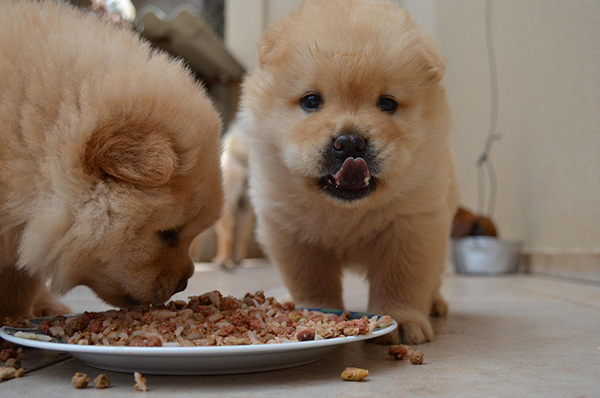
Chow Chows are a unique and beautiful breed, but they are prone to several potential health issues due to their genetic makeup and physical characteristics. Here’s a more detailed overview of the most common health concerns:
Hip Dysplasia
Hip dysplasia is a genetic condition where the hip joint doesn’t form correctly, resulting in a loose or unstable joint. As it progresses, it can lead to arthritis, pain, and mobility issues. Symptoms include limping, reluctance to run or jump, and stiffness. Genetics are a significant factor, but issues such as rapid growth, obesity, and improper exercise can worsen the condition. Regular vet visits, keeping a healthy weight, and offering joint supplements like glucosamine can help manage symptoms. In more severe cases, surgery might be necessary.
Elbow Dysplasia
Like hip dysplasia, elbow dysplasia affects the elbow joints due to abnormal growth or development. This can result in pain, lameness, and arthritis. Symptoms include limping, especially after exercise, and swelling around the elbow. Treatment options range from weight management and anti-inflammatory medications to surgical correction, depending on the severity. Early diagnosis through X-rays and regular vet visits is key to managing this condition.
Entropion
Entropion is a condition where the eyelid folds inward, causing the eyelashes to irritate the cornea. This can lead to irritation, ulcers, or even permanent damage to the eye. Symptoms include excessive tearing, squinting, and redness. Surgical correction is often necessary to resolve the issue and prevent long-term complications. Routine eye exams can help detect this condition early.
Patellar Luxation
Patellar luxation happens when the kneecap (patella) shifts out of its proper position, leading to pain and trouble walking. Symptoms include intermittent limping or a “skipping” gait. Mild cases may not need treatment, but severe cases might require surgery to realign the kneecap. Keeping a healthy weight and limiting excessive jumping can help minimize the risk.
Bloat (Gastric Torsion)
Bloat is a serious, potentially fatal condition where the stomach expands with gas and rotates, restricting blood flow. Signs include a bloated abdomen, anxiety, drooling, and non-productive vomiting. Immediate veterinary attention is critical, as bloat can be fatal within hours. To minimize the risk, feed your Chow Chow smaller, more frequent meals, avoid intense exercise right after eating, and consider using elevated food bowls. Some pet parents opt for preventive gastropexy surgery, especially if their dog is at high risk.
Thyroid Issues
Hypothyroidism, an underactive thyroid, is relatively common in Chow Chows. Symptoms include weight gain, sluggishness, hair loss, and skin issues like dryness or infections. A blood test can quickly diagnose the condition, and it can be managed with daily thyroid medication. Regular vet visits are essential to monitor thyroid levels and adjust treatment as necessary.
Skin Allergies and Infections
Chow Chows are prone to skin issues due to their thick double coat, which can trap moisture and debris. Common issues include hot spots (acute moist dermatitis), allergies, and bacterial or fungal infections. Symptoms include itching, redness, and hair loss. Regular grooming, including brushing and bathing with hypoallergenic shampoos, can help prevent skin issues. Your vet may suggest allergy testing or a specialized diet if allergies are suspected.
Lymphoma
Lymphoma is a form of cancer that impacts the lymphatic system and occurs more frequently in Chow Chows compared to some other breeds. Symptoms include swollen lymph nodes, lethargy, weight loss, and loss of appetite. Early detection through regular vet visits is crucial, as treatment options like chemotherapy can be effective in managing the disease. Although the exact cause is unclear, both genetics and environmental factors may contribute.
Brachycephalic Airway Syndrome
While Chow Chows are not as extreme as some brachycephalic breeds, their shorter snouts can still cause breathing difficulties, especially in hot or humid weather. Symptoms include snoring, labored breathing, and difficulty exercising. In more severe cases, surgery may be required to widen the nostrils or shorten the soft palate. Avoid overexertion and keep your Chow Chow cool during warm weather to prevent respiratory distress.
